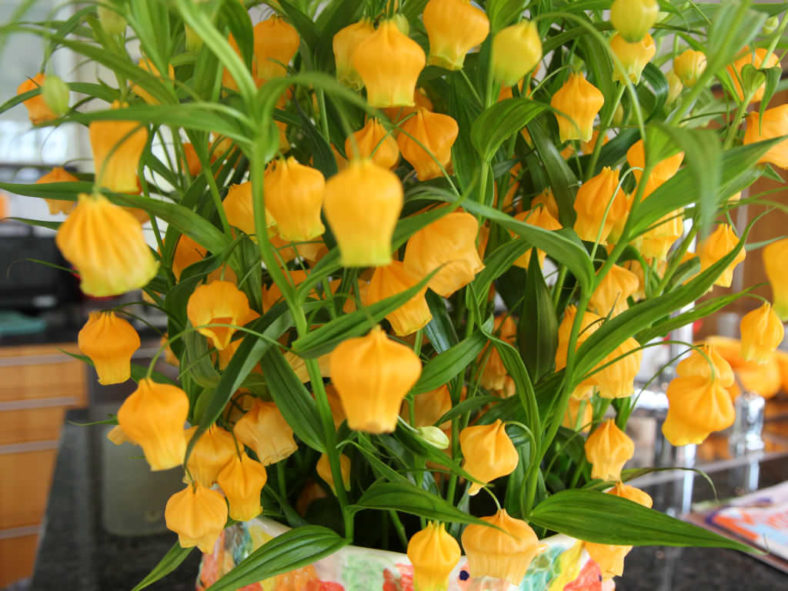Sandersonia, commonly called Golden Lily of the Valley or Christmas Bells, is a member of the Colchicaceae family, and only one species has been recorded. They are now rare in their native habitat of Natal, South Africa, usually only seen in nature reserves.
This beautiful tuberous plant is closely related to both Gloriosa and Littonia. Although all parts of this plant are poisonous, like all in the Colchicaceae family, the Zulu people were said to use the tuber as an aphrodisiac.
The plant, completely dormant in winter, emerges in late spring, makes rapid growth, and is in full bloom around Christmas.
The branched stems reach up to 2 feet (60 cm) in height and produce upwards of 25 glorious thimble-sized brilliant orange bells on dainty arching pedicels. These bells are reminiscent of Chinese Lanterns and are very decorative. They are sold widely worldwide as a cut flowers, lasting up to 3 weeks in a vase.
Growing Conditions and General Care
Sandersonia loves a sunny spot with well-drained loamy soil enriched with a complete fertilizer. They only require water during the growing period until the flowers have finished. We then find it to be more drought tolerant than we expected. However, they do not like to be too wet over winter.

The tuber has two fleshy prongs emerging from the central 'bulb.' These prongs should be planted down and covered with 2 inches (5 cm) of topsoil with about 3.1 inches (8 cm) between each tuber. When shoots emerge, they need to be protected from snails and slugs as they find the most desirable. They will do well in a pot or container so long as there is good drainage.
They increase by making a new tuber each from the growing prong and often a small 'nut' on the other prong. They can also be grown from seed, usually ready to harvest about the end of April. Seed should be planted in early winter, sown thinly in trays or pots using a very well-drained potting medium, and covered with 0.4 inches (1 cm) of the mixture.
This unusual South African is a splash of brilliant color at Christmas and well worth trying.
Source: nurseriesonline.com.au
Links
- Back to genus Sandersonia
- Plantpedia: Browse flowering plants by Scientific Name, Common Name, Genus, Family, USDA Hardiness Zone, or Origin

